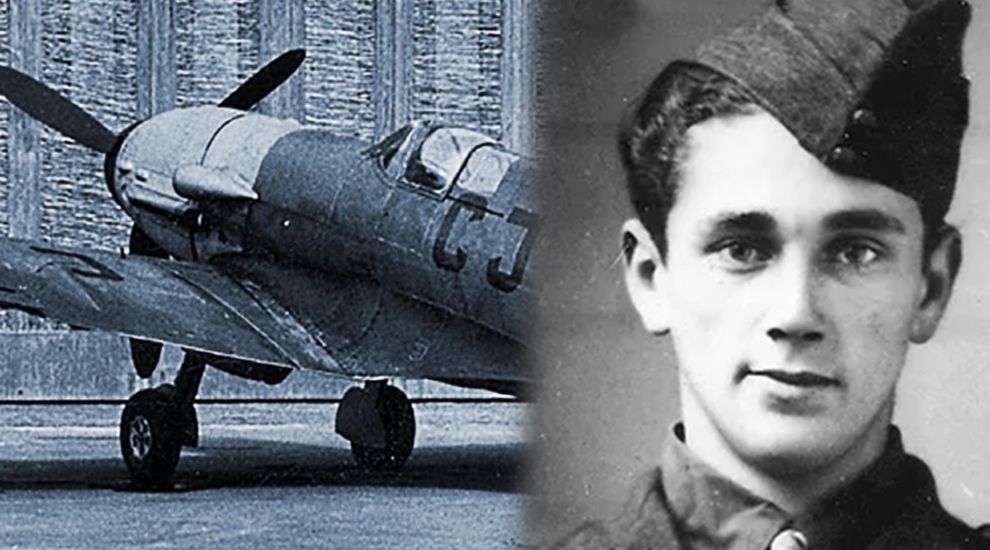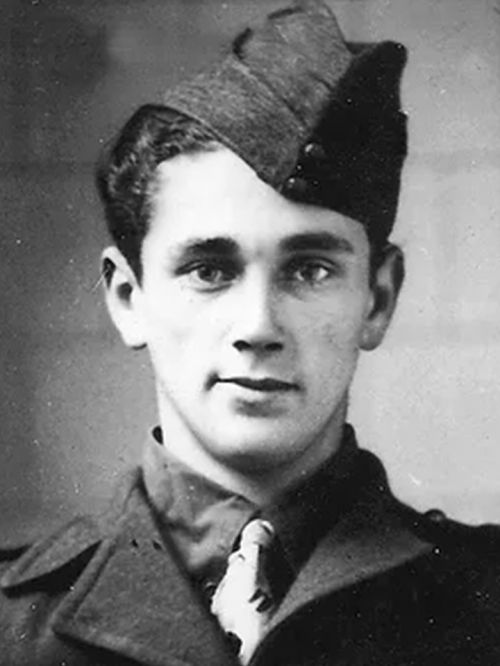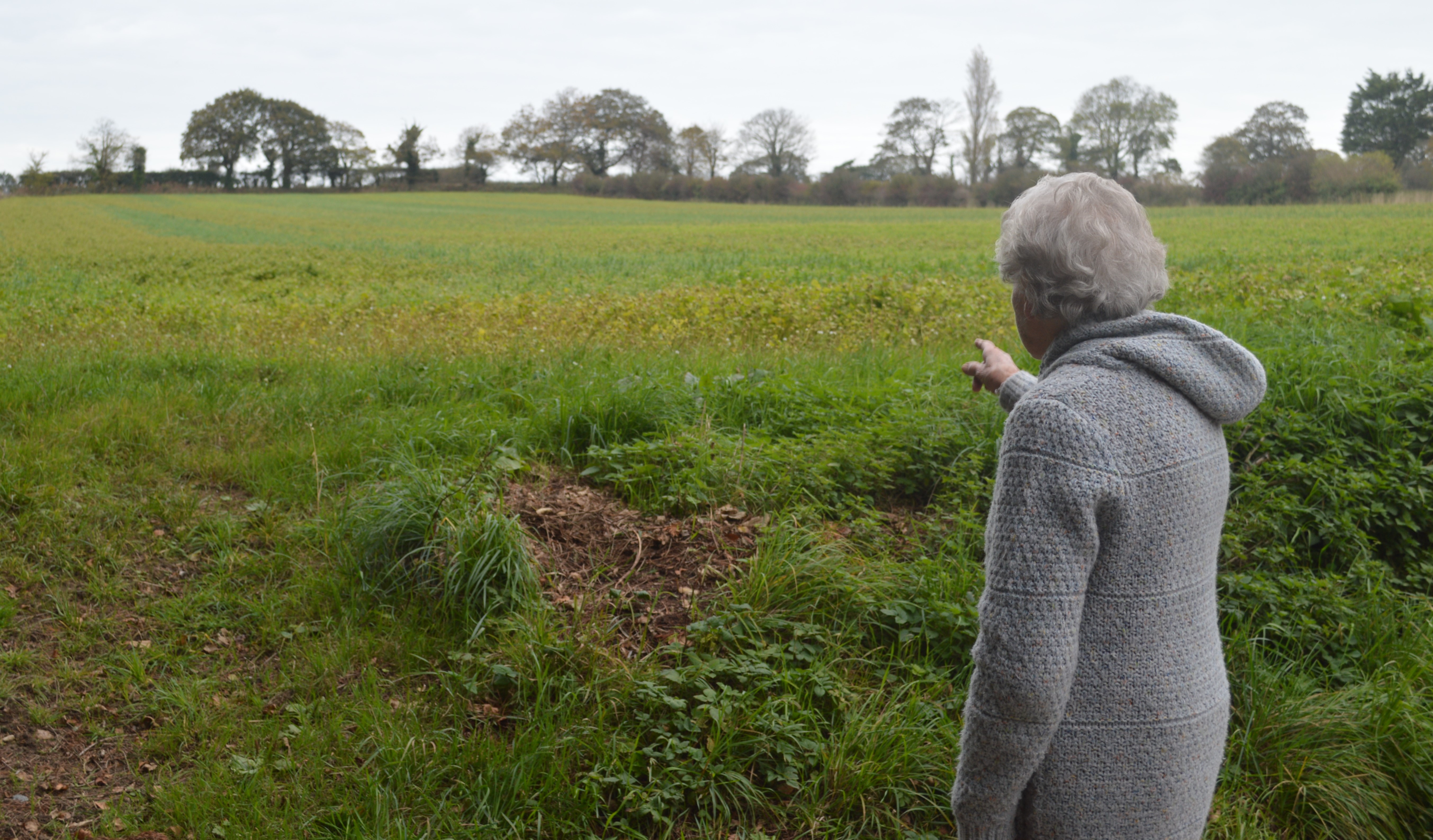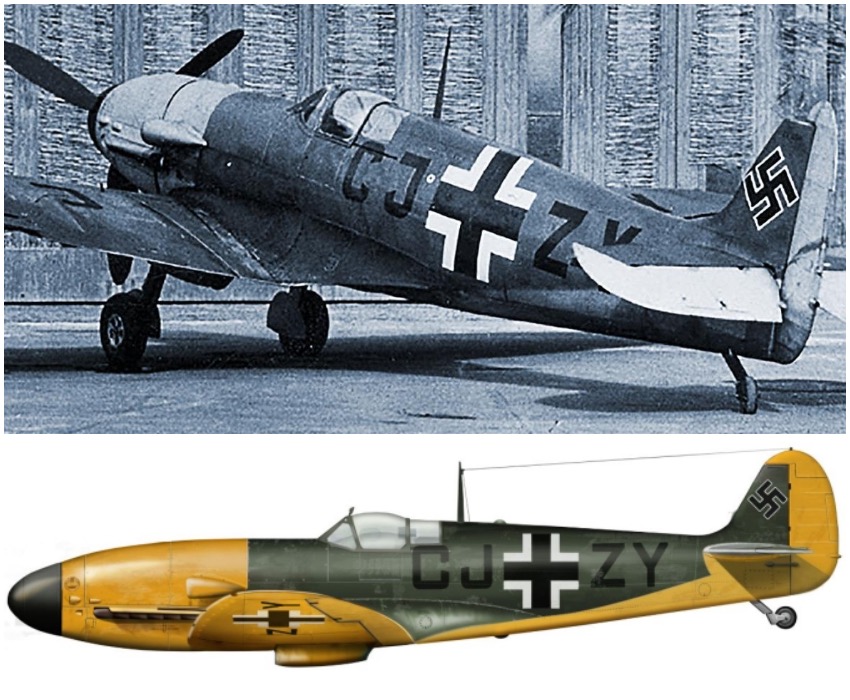


78 years ago today, a Royal Air Force Spitfire crash-landed in a Jersey field, which triggered a series of exploits, resulting in the pilot being immortalised in the Film, ‘The Great Escape’.
In the early afternoon of Wednesday 18 November 1942, two Spitfires took off from an RAF airfield in West Sussex. Their mission was to seek out and attack random opportunist targets over Normandy.
The Spitfires were flown by two Free French pilots who had joined the Royal Air Force: Lieutenant Bernard Scheidhauer and Henri de Bordas.
Whilst over France, Scheidhauer received damage to his Spitfire by German ground fire and the plane began to lose fuel. It is likely the controls of the aircraft were damaged as Bernard, rather than heading directly back to his base which would have been north, he headed in a westerly directly, taking him towards the Channel Islands.

Pictured: Lieutenant Bernard Scheidhauer.
Scheidhauer soon spotted land and managed to find a field large enough to land and make an emergency landing. Thinking he had reached the Isle of Wight, he was shocked to be told by 18-year-old farmhand Lewis Binet, he had in fact landed in German-Occupied Jersey!
On realising the situation, Bernard quickly tried to destroy his plane to prevent it falling into enemy hands, but, as petrol was not readily available, all Scheidhauer could do was damage a few vital cockpit components.
Very soon after Scheidhauer had landed, a crowd of people had gathered, all wanting to hear news of England.
Coincidently, amongst those who had gathered were my mother and grandparents. Throughout the Occupation, they lived at a property close to Victoria Village in Trinity. My mother - then a young girl - remembers being outside in the garden with her mother and being startled by the noise and sight of a very low-flying plane heading towards Dielament Manor.
Being minutes away, my mother and grandparents ran through the country lanes towards the crash site. My mother recalls feeling anxious before arriving at the scene, in case the pilot was hurt and fear of not knowing what they would see and find.

Pictured: Colin's mother, Yvonne Isherwood, points towards the crash site.
When they arrived, several people were around the aircraft and fortunately the pilot was unhurt in the crash landing. My mother thinks my Grandfather spoke to Scheidhauer whilst they were at the crash site.
She also remembers several people taking items off the plane as souvenirs, including my Grandfather who had a piece for many years. Sadly, it can no longer be located and was probably thrown away when they moved house.
My mother and grandparents were at the site for some time, but they decided to leave before the Germans arrived. When they did arrive, they moved the crowd away from the plane and took Scheidhauer into custody.
Occupation diarist Leslie Sinel recorded the event:
“British plane (an old type Spitfire) receives damage in a fight over Guernsey, and as it cannot get back to its base, it makes a forced landing here in the grounds of Dielament Manor, Trinity. The pilot a young Frenchman, whose home is at Brest, stepped out, and it was about three-quarters of an hour before the Germans came along; in the meantime he had destroyed several things connected to the mechanism and had conversed freely with many local inhabitants who had gathered around. He said that everything was going all right in England and everyone was very happy; he also said that the collapse of Italy was expected at any time. The pilot was eventually taken prisoner, but several people procured souvenirs from the plane before the Germans arrived."
After 21-year-old Lieutenant Bernard Scheidhauer’s adventure in Jersey, he embarked on another, but one that would end in tragedy.
He was taken from Jersey and transported to Stalag Luft III Prisoner of War camp in East Germany. In March 1944, the Allied prisoners organised a mass breakout from the camp, through a tunnel named ‘Harry’. It was envisaged 220 prisoners would be able to escape, but unfortunately the Germans found the tunnel whilst the escape was taking place. Nevertheless, an impressive 76 prisoners did get away.
The story, although semi-fictionalised, was immortalised in the 1963 film, ‘The Great Escape’.

Pictured: Bernard's plane was later taken to Germany, and covered in German markings.
Bernard Scheidhauer had escaped with Squadron Leader Roger Bushell, played by Richard Attenborough in the film.
Out of the 76 allied escapees, 73 were eventually captured and tragically 50 of those prisoners were executed by the Gestapo. Lieutenant Bernard Scheidhauer was one of the executed prisoners. After the war, several former Gestapo and military personnel were convicted of war crimes for the Stalag Luft III murders.
Remarkably, the story does not end there, for after Scheidhauer crash-landed his Spitfire at Dielament Manor, the plane was taken to Germany for examination where it was repaired and repainted in German markings and fitted with a Daimler-Benz engine.
It was intended to use the plane as a comparison against German aircraft, however before any trials could take place, the plane was destroyed in an American bombing raid.
Pictured: A memorial to the Lieutenant in Trinity.
Today, a memorial to Lieutenant Bernard Scheidhauer stands on the Rue de Dielament in Trinity, close to the location of where he crash-landed his Spitfire on 18 November 1942.
Comments
Comments on this story express the views of the commentator only, not Bailiwick Publishing. We are unable to guarantee the accuracy of any of those comments.